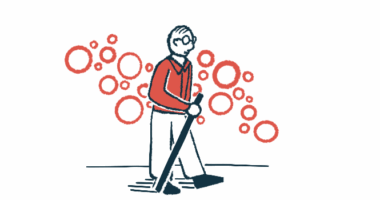Add-on IVIG therapy effective for some severe AIHA patients: Study
One-third of adults respond to intravenous immunoglobulins after 7 days

A third of adults with severe autoimmune hemolytic anemia (AIHA) — a group of rare conditions that includes cold agglutinin disease (CAD) — responded to intravenous immunoglobulins (IVIG), when used as an add-on therapy, after seven days, according to a retrospective study from France.
The study also detailed a treatment response seen in more than half of patients (57%) with available blood data at two weeks after IVIG, a therapy meant to neutralize the self-reactive antibodies that drive AIHA, thereby helping to ease symptoms and disease activity. Most patients in the study had failed to respond to previous treatments, including corticosteroids and rituximab.
These findings “confirm that in addition to standard of care, the off-label use of IVIG may be helpful in one-third of adults managed for severe AIHA,” the researchers wrote.
The results were published in the form of a letter to the editor, titled “Intravenous immunoglobulin as a rescue therapy for severe adult autoimmune hemolytic anemia: Results from a French multicenter observational study,” in the American Journal of Hematology.
Little data available on use of IVIG therapy for AIHA patients
AIHA is an umbrella term for disorders in which the body’s immune system produces self-reactive antibodies that wrongly attack red blood cells. It can be classified as CAD, warm AIHA, or mixed AIHA, depending on whether the antibodies bind more easily to red blood cells at lower temperatures, higher temperatures, or both.
Corticosteroids, a type of anti-inflammatory and immunosuppressive medication, are the first-line treatment for warm AIHA, the most common type of these disorders. People with the rarer form CAD, meanwhile, are often treated off-label with rituximab (sold as Rituxan, among others), a therapy designed to target antibody-producing immune cells.
In “severe, life-threatening cases of AIHA, the off-label use of IVIG is often considered,” the researchers wrote.
IVIG therapy delivers specific antibodies purified from healthy people to neutralize self-reactive antibodies in a patient’s bloodstream and block the abnormal production of these antibodies.
However, “there is actually only little evidence supporting the efficacy of IVIG in this setting, as the sole large retrospective series focused on this topic was published in 1993.”
Now, a team of researchers from across France described the outcomes of 34 adults with AIHA who received at least one course of IVIG in 14 French centers between 2013 and 2021. Patients were identified via the nationwide CARMEN-FRANCE AIHA registry (NCT02877706) for adults newly diagnosed with AIHA.
The median age of the patients was 59, and 53% were women. More than two-thirds of the patients — 23 or 68% — had warm AIHA, while six (18%) had CAD, and five (14%) had mixed AIHA.
Before IVIG, patients received a median of one previous line of therapy (range, 0-8), with the most common being corticosteroids, used in 88% of cases. More than half (62%) received at least one blood transfusion prior to IVIG.
Researchers analyzed outcomes in 34 patients treated in France
AIHA severity was the most commonly reported main reason by clinicians for the use of IVIG therapy. A total of 22 patients (64.7%) received IVIG at AIHA onset, while the remaining 12 (35.3%) received the treatment at the time of disease relapse.
The team then analyzed patients’ overall response rate to IVIG after seven days, and after 14 days when such data were available. A treatment response was defined as an increase of at least 2 grams per deciliter (g/dL) in the blood levels of hemoglobin, the protein in red blood cells that transports oxygen throughout the body, without any blood transfusion.
A good treatment response was defined as reaching a hemoglobin level of 10 g/dL or higher, with an increase of at least 2 g/dL.
They found that 11 patients (32.4%) — two or 33% of the six CAD patients — responded to IVIG after seven days, with two of them showing good responses. A blood transfusion was administered to 13 patients (38.2%) during this period, rendering them as nonresponders.
A total of 28 patients (82.4%) had available hemoglobin data at 14 days after IVIG, and 16 (57%) were classified as responders. Six of these patients were deemed good responders.
In the absence of any clear predicting factor of response, and taking into account the cost and the recurrent problems of IVIG shortage, the use of IVIG in this setting should be limited and well weighed.
Statistical analyses showed that IVIG administration at AIHA onset was the only factor that was significantly associated with a higher chance of achieving a treatment response. Specifically, 45% of patients given the therapy at that early stage responded to IVIG, compared with 8% of those treated with IVIG at the time of an AIHA relapse.
There were no cases of AIHA symptom worsening due to IVIG. One patient, age 60, developed a blood clot-related event, but had a good outcome.
The low number of included patients in this retrospective study limited the “chance to identify some parameters that could be associated with a higher response rate,” the researchers wrote.
Larger studies, following patients over time, are needed to clarify the therapeutic potential of IVIG therapy in severe AIHA, the team noted.
But “in the absence of any clear predicting factor of response, and taking into account the cost and the recurrent problems of IVIG shortage, the use of IVIG in this setting should be limited and well weighed,” the team concluded.








